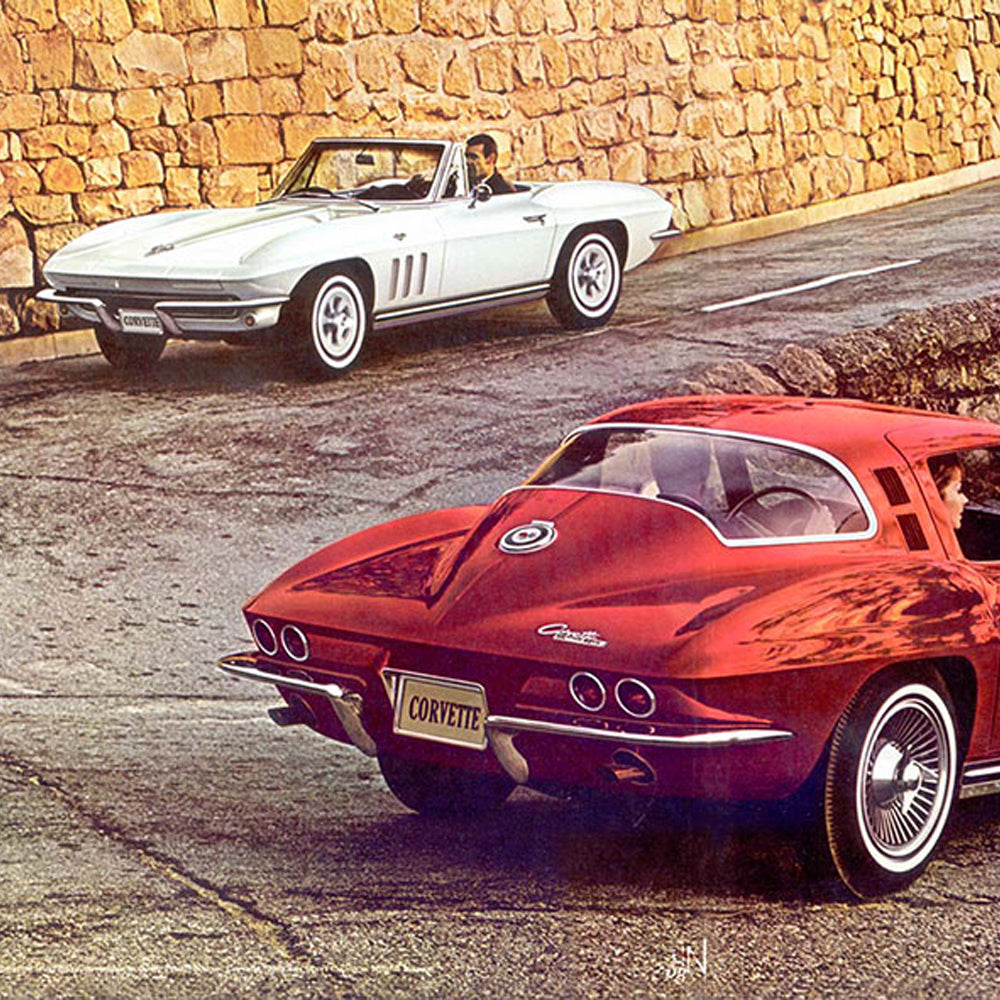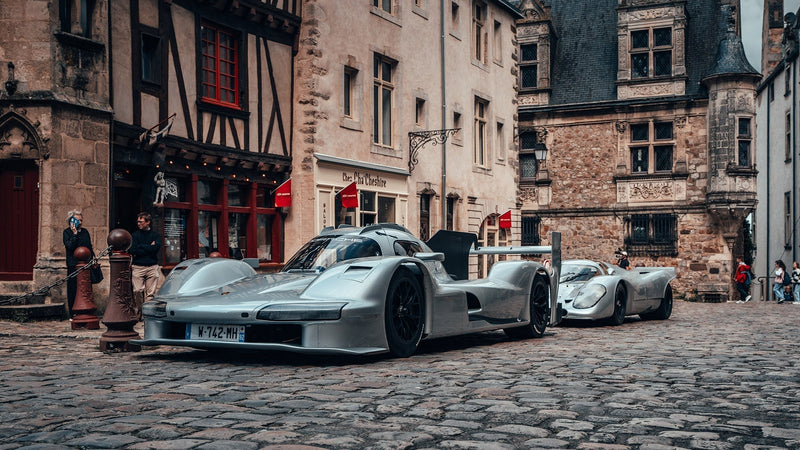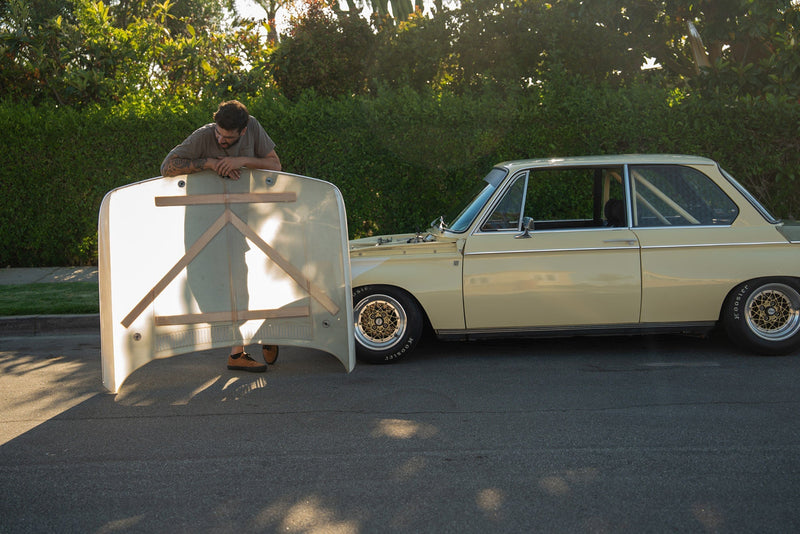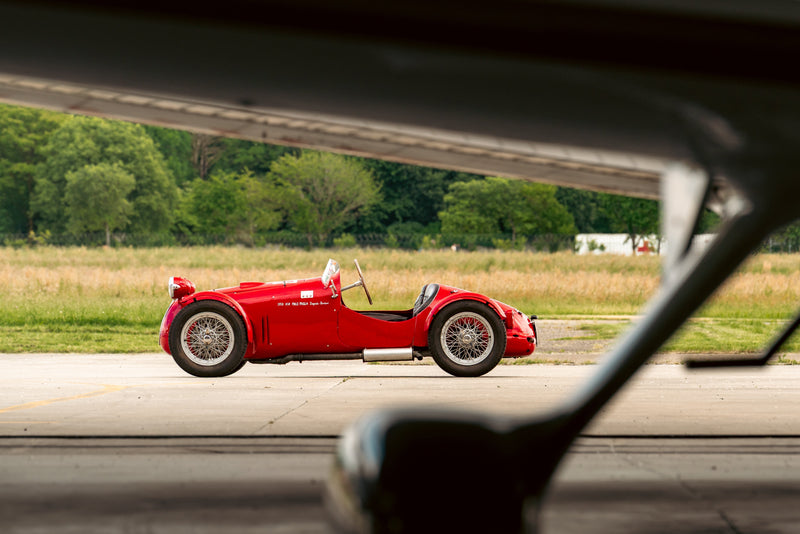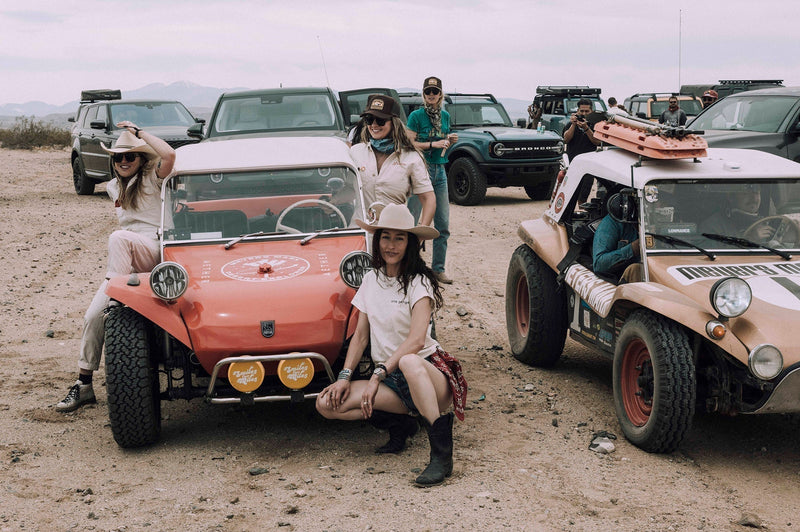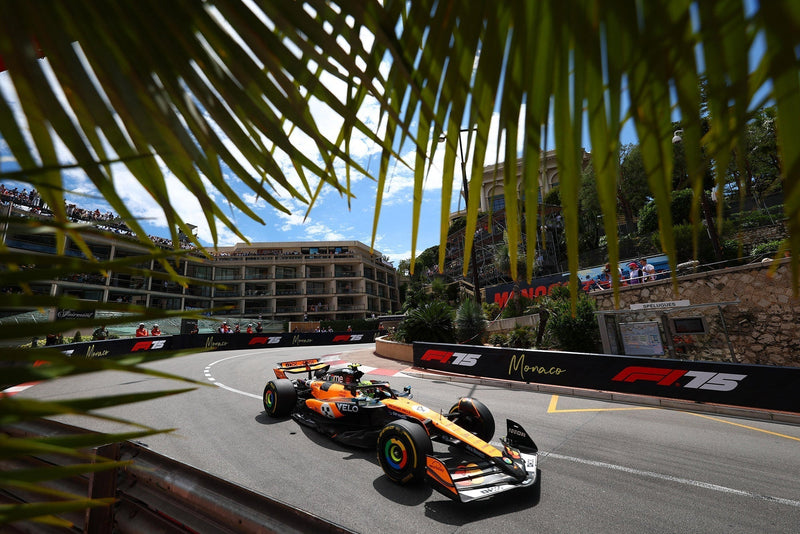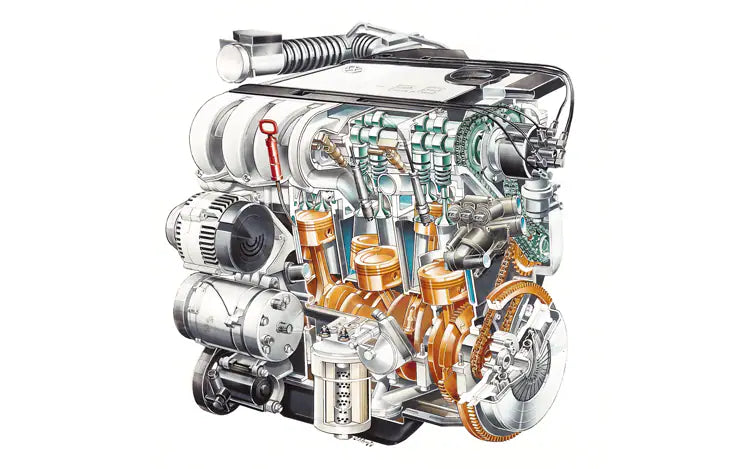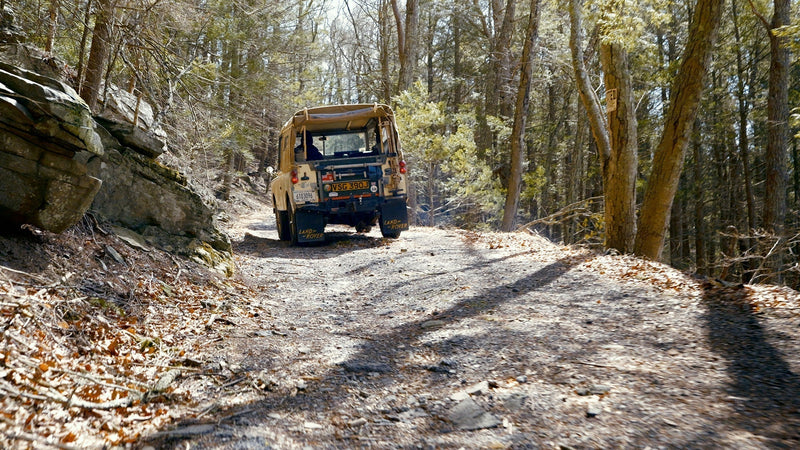


And not just the split-window, either. Built for the first year of production only, it disappeared in 1964, much in part due to engineer Zora Arkus—Duntov’s strong dislike for it—he felt it restricted rearward vision. Bill Mitchell, Vice President of GM’s “Styling Section”, thought it was an integral design element, though, and I think he was right. Even without the vestigial tailfin, however, it remained a seriously good looking piece of fiberglass. Chevy called it the “Sting Ray”, and it was the first time a Corvette was offered as a coupe.
It was available with a variety of small and big block power, among the rarest of which was the L88 427. Only 20 such examples were built during the C2’s last year of production in ’67, and although factory-rated at 430 HP, a more accurate estimate is said to be nearer 560 HP. There was a huge list of available performance options, including fuel injection on the 327 c.i., four wheel discs, suspension packages, and final drive ratios—as a result, it’s uncommon to see two identical cars. Suspension was by conventional A-arms and coil springs at the front, and introduced the now-traditional, transverse-leaf-spring independent rear.
I don’t know if they handled, and I don’t really care to look it up—they look like grounded mid-century spaceships and sound like a lion with a heavy menthol cigarette addiction, and that’s quite enough for me, thanks. I’ll take a four-speed Fuelie ’63 coupe in Silver Blue over red, please, and I don’t care that it won’t be matching numbers, either. Purists and collectors can scoff, but cars are for driving, not speculating on. None of that is to say I wouldn’t spend quiet hours with adult beverages just staring at it parked in my imaginary garage, though. I’m guilty of this with far lesser cars.
So as I try to distance myself from my former prejudices, I stand by my statement that the C2 is the best-looking American car of all time, at least as far as sports cars go. Even slushbox, softop Sting Rays are cool, but thank God scissor door kits and underglow kits weren’t around in the 1960s.



Image Sources:acarisnotarefrigerator.com ,oldcarbrochures.com ,oldcarbrochures.com ,oldcarbrochures.com


